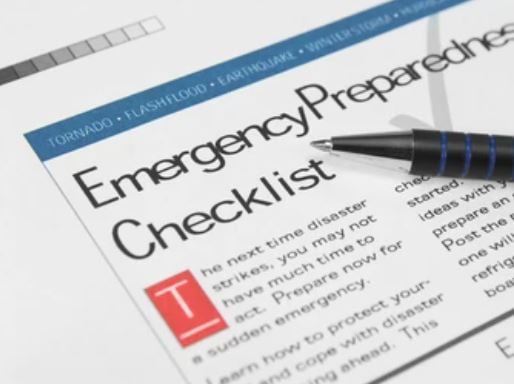Are You Prepared?
By AccentCareEmergency Preparedness in community-based health care
In health care, everyone understands the importance of emergency preparedness. When a storm damages city infrastructure or a chemical spill threatens air quality, people need health care services more than ever. People also only tend to think of keeping hospital doors open – vital as they may be, it leaves out an enormous component of health care organizations, workers, and their patients forgotten. What about hundreds of thousands of caregivers and patients in community-based health care?
“For community health organizations, like home health and hospice where the workforce is dispersed, emergency management is a unique challenge,” said Kevin Hannes, Vice President, Emergency Management, AccentCare. “It is important to simplify emergency management to make it work well.”
Hannes said that means understanding the four phases of emergency management and how those work for your organization or group.

Phase 1: Preparedness
“This is where some of the biggest steps are taken, with deliberate and strategic planning.” said Hannes. Look at the hazards in place – from travel concerns for caregivers and access to the home to how the organization trains its employees. “Work to be prepared and know your environment and perform an all-hazard vulnerabilities assessment to get your teams ready. If you want to be ready, you need to know your risks.”
Phase 2: Response
“Once the incident or disaster occurs, you enter the response phase, where organizations actively work through their action plans and respond to time-critical, situational demands,” said Hannes. That means assessing risks as they are presented, making decisions quickly, and ensuring continuity of care. Often this work is done from an emergency operations center – often virtually in community health care – where collaboration is key.
Phase 3: Recovery
The next phase is about coming out of the disaster or incident and beginning to move forward toward normalcy. “The initial recovery should be focused on returning to operation, even if limited,” said Hannes. This means “once the storm has cleared” making sure that the business of providing care can continue wherever people call home. This includes things like planning for staffing continuation and restoring medical services, even in a limited capacity, as your teams work toward full restoration of service. “Once you have faced the emergency, then it’s time to rebuild.”
Phase 4: Mitigation
Whether it’s hurricanes on the coast, blizzards in the north, or other man-made emergencies anywhere else, every organization will need to put their emergency management plans into action at some point. “For community health organizations, mitigation is about reducing the risks where you can find them and minimizing the potential damages and problems you’ll face,” said Hannes. “After you’ve gone through the emergency and recovered, you’ll have a well-earned understanding of those risks and improved ideas about how to avoid them in the future. Then it’s back to preparation.”
Thinking about emergency management in simple terms can help community health care organizations apply those principles to their companies and teams. The ability to deliver health services to individuals in non-structured environments without additional training makes caregivers in the home ideal as key responders in times of crisis. Unfortunately, too few of them are prepared to fully face down a disaster incident.
That’s why AccentCare as an enterprise has an emergency management division providing overall strategic framework and guidance, coordination, and collaboration to support, prepare for, respond to, and recover from all events. Even in their own homes, or dispersed across a wide region, patients still require care. Choose a post-acute partner that can give you peace of mind for the patients you send them, even – and especially – during an emergency.
To learn more about emergency management and much more, visit the on-demand continuing education library.